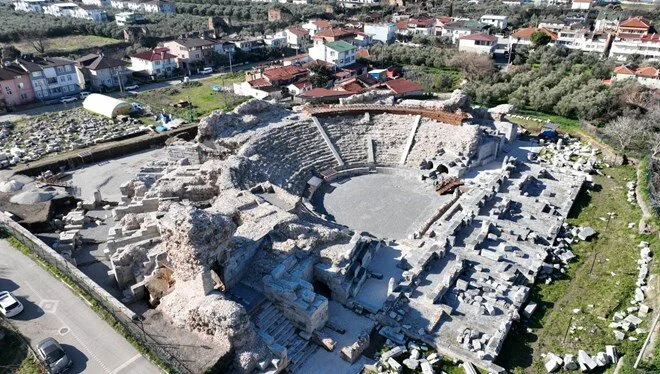
Touristic Mesopotamia Express starts its journey
The touristic Mesopotamia train, which will depart from the Turkish capital Ankara and pass through Central Anatolia and Eastern Anatolia and stop in Diyarbakır, will start its services on April 19. TCDD organized a roadshow before April 19. The Mesopotamia train started its promotional tour from Ankara and made stops in Kayseri, Malatya and Elazığ

Beach projects for the ancient Lycian city of Phaselis canceled
The court decided to cancel the public beach projects in Bostanlık and Alacasu bays of the ancient Lycian city of Phaselis in southern Antalya, which were tendered in February last year. A private company, which won the tender held by the Ministry of Culture and Tourism, has started construction of two public beach projects in

The 1000-year-old balbals in Çivril bear the traces of Turkish civilization and belief system
The balbals in Özdemirci Cemetery in Çivril district of Denizli continue to attract the attention of history buffs and archaeologists. These balbals, which are estimated to have a history of about 1000 years, bear the traces of Turkish civilization and belief system. Balbals are stone monuments erected in the cemeteries of Turkic communities migrating from

Aygül Süel “We are making big mistakes about the Hittites”
Prof. Dr. Aygül Süel, Head of the Department of Archaeology, Faculty of Arts and Sciences, Hitit University and the director of the excavation of the city of Sapinuwa , said in an online session she attended in recent years that we are making great mistakes for the Hittites. Stating that some of the information that has

Sarcophagus found during electricity cable renewal work in Hatay
A sarcophagus was found in Hatay, which was destroyed by a major earthquake in February last year, during the renewal work of the electricity cables started by the energy company. Thanks to the meticulous work of the workers, the sarcophagus was removed without damage and taken under protection by the Hatay Museum archaeologists. Mythological objects

Two open-air temple thought to belong to the Urartians discovered in Tunceli
Archaeologists have discovered two separate open-air temple, one in the easternmost and the other in the westernmost part of Tunceli province. The discovery was made by Assoc. Prof. Dr. Serkan Erdoğan, Head of the Department of Protohistory and Prehistoric Archaeology, Department of Archaeology, Faculty of Arts and Sciences, Faculty of Arts and Sciences, Yozgat Bozok

2400-year-old artifacts found in the Black Sea’s first scientific underwater excavation
The first scientific underwater excavation of the Black Sea was carried out in Kerpe Bay. Dozens of historical artifacts dating from the 4th century BC to the 12th century AD were unearthed. Kerpe is a small settlement on the western Black Sea coast of Kandıra district of Kocaeli province in northern Turkey. Kerpe was known

1800-Year-Old Roman Theater in Iznik Restored
The Iznik Roman Theater, a 2nd-century structure built during the Roman Empire, has been fully restored after extensive renovations. The theater, located in the Iznik district of Bursa, Türkiye, is one of the best-preserved Roman theaters in the country. The Iznik (Nicaea) Theater was built by the Roman Emperor Trajan for the historian and writer

The arrival of spring in the Hittites was celebrated with the Purilli Festival
Spring is a season of abundance, fertility, and the beginning of new lives for humans, and it is a season with many meanings. Therefore; the arrival of spring was welcomed with celebrations, feasts and sacrificial ceremonies. Celebrations differed according to the geography of the people. Each society celebrated the arrival of spring according to its

Found evidence that Ötzi the Iceman’s tattoos were done using a single-ended tool
A new discovery has been made about how the 5,300-year-old mummy known as Ötzi the Iceman, found frozen in the Alps, was tattooed. Scientists have found evidence that Ötzi’s 61 tattoos were made using a single-ended tool. The results of the study, conducted by an international team of archaeologists, historians and tattoo artists, were published
